As a reconstructive technique following breast surgery.
By inserting an implant behind each breast, or even just one
breast,
surgeons are able to increase a woman's bustline by one or more bra cup
sizes. If you're considering breast augmentation, this will give you a
basic understanding of the procedure--when it can help, how it's
performed, and what results you can expect. It can't answer all of your
questions, since a lot depends on your individual circumstances.
Breast augmentation can enhance your appearance and your
self-confidence, but it won't necessarily change your looks to match
your ideal, or cause other people to treat you differently. Before you
decide to have surgery, think carefully about your expectations and
discuss them with your surgeon.
The best candidates for breast augmentation are women who are
looking for improvement, not perfection, in the way they look. If
you're physically healthy and realistic in your expectations, you may
be a good candidate.
Breast augmentation is usually done to balance a difference in
breast size, to improve body contour, or as a reconstructive technique
following surgery.
A breast implant is a rubber shell filled with either silicone gel,
hydrogel or a salt-water solution known as saline.
Saline-filled, hydrogel or silicon-filled implants continue to
be
available to breast augmentation patients on an unrestricted basis.
Implants are categorized according to their shape and
texture.
There are implants which have a smooth shell and those that have a
textured shell. The texture of the implant may influence
the likelihood of capsular contractures. Textured implants have a
much lower likelihood of forming capsular contractures or
hardness. Implants are also classified by their shape. There are
two different shapes for saline filled implants - round and tear drop
shaped. The round implants are measured by their fill
volumes. The tear drop shaped implants are measured by their
dimensions, such as their height, width and projection (ie, how far
they push the breast outward). Since every patient's body type is
different, as are their goals for surgery, the wide range of sizes and
shapes of the tear drop shaped implants enable the surgeon to match an
implant which is precisely sized and shaped for you. By measuring
the dimensions of your rib cage over the area where your breasts lie
(or should lie), an implant is selected that corresponds to those
measurements. This enables your surgeon to create beautifully
shaped, natural looking breasts. There is fullness and a gentle
slope to the upper breast, and pleasing roundness in the lower breast.
Breast augmentation is relatively straightforward. But as with
any
operation, there are risks associated with surgery and specific
complications associated with this procedure.
The most common problem, capsular contracture, occurs if the
scar or
capsule around the implant begins to tighten. This squeezing of the
soft implant can cause the breast to feel hard. Capsular contracture
can be treated in several ways, and sometimes requires either removal
or "scoring" of the scar tissue, or perhaps removal or replacement of
the implant. The texture of the implant selected for you and its
placement under the muscle can reduce the likelihood of capsular
contracture.
Bleeding and infection after surgery is extremely rare. .
Temporary changes in nipple sensation can occur. Some
women
report that their nipples become oversensitive, undersensitive, or even
numb. You may also notice small patches of numbness near your
incisions. These symptoms usually disappear within time, but may be
permanent in some patients.
There is no evidence that breast implants will affect
fertility,
pregnancy, or your ability to nurse. If, however, you have nursed a
baby within the year before augmentation, you may produce milk for a
few days after surgery. This may cause some discomfort, but can be
treated with medication prescribed by your doctor.
Occasionally, breast implants may break or leak. Rupture can
occur
as a result of injury or even from the normal compression and movement
of your breast and implant, causing the man-made shell to leak. If a
saline-filled implant breaks, the implant will deflate in a few hours
and the salt water will be harmlessly absorbed by the body.
Replacement of a deflated implant is very straightforward and should be
performed within a few days. No recovery is necessary for this
procedure.
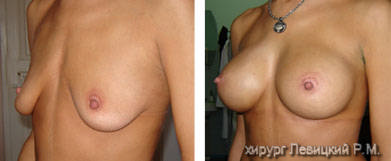
Mammary surgery - before and after operation
There is no evidence that breast implants cause breast
cancer.
In fact, there are several studies that show a lower incidence of
cancer in women with breast implants. The presence of implants
may change the way mammography is done to detect cancer. When you
request a routine mammogram, be sure to go to a radiology center where
technicians are experienced in the special techniques required to get a
reliable x-ray of a breast with an implant. Additional views will be
required. Ultrasound examinations may be of benefit in some women with
implants to detect breast lumps or to evaluate the implant.
While the majority of women do not experience these
complications,
you should discuss each of them with your physician to make sure you
understand the risks and consequences of breast augmentation.
Planning your surgery
In your initial consultation, your surgeon will evaluate your
health
and explain which surgical techniques are most appropriate for you,
based on the condition of your breasts and skin tone. Detailed
measurements of your body and breast proportions are performed to help
you select an implant. If your breasts are sagging, your doctor
may also recommend a breast lift.
Be sure to discuss your expectations frankly with your
surgeon. He
should be equally frank with you, describing your alternatives and the
risks and limitations of each. And, be sure to tell your surgeon if you
smoke, and if you're taking any medications, vitamins, or other drugs.
Your surgeon should also explain the type of anesthesia to be
used,
the type of facility where the surgery will be performed, and the costs
involved.
Preparing for your surgery
Your surgeon will give you instructions to prepare for
surgery,
including guidelines on eating and drinking, smoking, and taking or
avoiding certain vitamins and medications.
While making preparations, be sure to arrange for someone to
drive
you home after your surgery and to help you out for a few days, if
needed.
Where your surgery will be performed
Your surgery will be performed in a hospital outpatient
facility. You will go home after release from the recovery room.
Types of anesthesia
Breast augmentation is performed with a general anesthesia, so
you'll sleep through the entire operation.
The surgery
The method of inserting and positioning your implant will
depend on
your anatomy and your surgeon's recommendation. The incision can be
made either in the crease where the breast meets the chest, around the
areola (the dark skin surrounding the nipple), or in the armpit. Every
effort will be made to assure that the incision is placed so resulting
scars will be as inconspicuous as possible. It also prevents any
interference with the milk ducts and blood supply to the breast.
Incisions are made to keep scars as inconspicuous as possible, in the
breast crease, around the nipple, or in the armpit. Breast tissue and
skin is lifted to create a pocket for each implant.
Working through the incision, the surgeon will lift your breast tissue
and skin to create a pocket, either directly behind the breast tissue
or underneath your chest wall muscle (the pectoral muscle). The
implants are then centered beneath your nipples.
Placing the implants behind your chest muscle reduces the potential for
capsular contracture. This placement may also interfere less with
breast examination by mammogram than if the implant is placed directly
behind the breast tissue. Placement behind the muscle however, may be
more painful for a few days after surgery than placement directly under
the breast tissue.
The surgery usually takes one to two hours to complete. Many layers of
internal stitches are used to close the incisions, which will be taped
for greater support. There are no outside stitches. After surgery,
breasts appear fuller and more natural in tone and contour. Scars will
fade with time.
After your surgery
You're likely to feel tired and sore for a few days following
your
surgery, but you'll be up and around in 24 to 48 hours. Most of your
discomfort can be controlled by medication prescribed by your doctor.
You will wear a supportive bra around the clock for the first 6 weeks
after surgery. You may also be given a bandeau to help hold the
breasts in position. It takes several weeks for the
swelling to disappear. It takes even longer for the breasts to
assume their final shape and softness.
Getting back to normal
You should be able to return to work within 3-7 days,
depending on
the level of activity required for your job.
Follow your surgeon's advice on when to begin exercises and normal
activities. Your breasts will probably be sensitive to direct
stimulation for two to three weeks, so you should avoid much physical
contact. After that, breast contact is fine once your breasts are no
longer sore, usually three to four weeks after surgery. Most
patients can resume exercise, such as walking, treadmill,
stairclimbers, at one week after surgery. Running and weight
lifting can be resumed approximately 6 weeks after surgery.
Your scars will be firm and pink initially and then gradually fade and
flatten for up to a year after surgery. You will be provided with
a cream to help your scars heal and fade quickly
Your new look
For many women, the result of breast augmentation can be
satisfying,
even exhilarating, as they learn to appreciate their fuller appearance.
Regular examination by your plastic surgeon and routine mammograms for
those in the appropriate age groups at prescribed intervals will help
assure that any complications, if they occur, can be detected early and
treated.
Your decision to have breast augmentation is a highly personal one that
not everyone will understand. The important thing is how you feel about
it. If you've met your goals, then your surgery is a success.
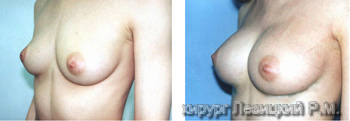
Mammary surgery - before and after operation
Breast reduction and breast lift
Breast reduction (reduction mammaplasty) and breast lift
(mastopexy)
Breast Reduction
is a procedure designed to reduce the size of a woman's breasts. This
is done for both medical and cosmetic reasons. What is Breast Lift?
Breast lift
surgery removes the excess skin of sagging breasts without greatly
reducing the size of the breast. It is usually done as a cosmetic
procedure.
You should
expect that your breasts will be reduced to the size and shape that you
discussed with your surgeon prior to surgery. They will be smaller,
lighter and firmer. You should expect to be more comfortable and have
fewer problems related to large breasts after the surgery.
The scars
of breast lift or reduction are noticeable and the fold of fat that is
often present under the arm will not be removed during the surgery.
Scars are easily hidden under a bra or bathing suit.
Breast
reduction is suitable for women who feel that their breasts are too
large and/or pendulous or they are suffering physical symptoms related
to the weight of large breasts. For example back, neck and shoulder
pain, indented bra straps, breathing or skeletal problems or skin
disease under the fold of large breasts.
This can be
performed in healthy women of any age. This procedure may lead to an
improvement in posture, greater range of physical activity, reduce
hormonally related breast pain, reduce skin irritation under breast
folds and increase self-confidence in women who are sensitive about
their large breast size.
Breast lift
is suitable for women who are happy with the size of their breasts but
are dissatisfied with the sagging and loss of firmness that occurs with
age.
This also
can be performed in healthy women of any age however, it is more common
in older women. It can be performed on women with any sized breasts but
results are longer lasting in smaller breasted women.
Mastopexy
can be performed in conjunction with breast enlargement using implants
to lift and enlarge a woman's breasts. It may also raise the position
of downward facing nipples and reduce the size of large areolae.
In certain
circumstances, breast lift and/or reduction can be used to balance
asymmetry of breasts or to match a healthy breast to one that has been
operated on for breast cancer.
Surgical Technique
The basic
techniques for both breast reduction and breast lift are similar
however, breast reduction involves removing more of the breast tissue
and breast lift involves removing mostly skin.
In almost
all cases, the nipple and areola remain joined to their blood and nerve
supply when they are re-positioned. In cases, where the breasts are
very large, occasionally the nipple and areola need to be removed
completely and replaced as a graft when being re-positioned. When this
is necessary, all sensation to the nipple and ability to breast feed
are lost.
The site of
the incisions is dependent on your breast size and shape, your
surgeon's preferences and the amount of tissue to be removed. There are
3 main methods of breast reduction/lift.
Inferior
pedicle (Robbins) Method - This is the most commonly performed
technique. It involves incisions around the areola, under the breast in
the infra-mammary fold and a vertical line between the two. Excess
skin, fat and breast tissue are removed and weighed. This tissue is
sent to the pathologist to be examined for any abnormality or evidence
of breast cancer.
The breast is
then re-shaped and stitched into place. A drainage tube is usually
required and this is placed at the end of the infra-mammary incision
under the arm. It is usually removed 1-2 days after surgery.
The other
side is then done in the same manner, aiming for as symmetrical result
as possible.
Lejour
Method - This method is similar to the Robbins technique but the
horizontal incision along the infra-mammary fold is not used. The
vertical (or sometimes oblique) incision is puckered and takes some
weeks to become smooth.
Benelli
(Peri-areola) Method - This method involves two circular incisions
around the areola. Excess skin, fat and breast tissue are removed
between the two. The wounds are then sutured closed. It can lead to
flat looking breasts and is not commonly used.
Liposuction may
in some case be performed in conjunction with breast lift or reduction
surgery to give an improved contour. Breast reduction surgery usually
takes 1-4 hours. Breast lift usually takes 1-3 hours.
The most
important thing to remember with this type of surgery is that it will
leave permanent scarring. Although these scars fade with time, they
will always be noticeable without a bra on. It is important to be
mentally prepared for this surgery and understand that the aim is an
improvement, not perfection.
Breast reduction
and breast lift surgery is usually performed under a general
anaesthetic but in certain cases, breast lift surgery may be done under
local anaesthetic with heavy sedation in a day surgical facility.
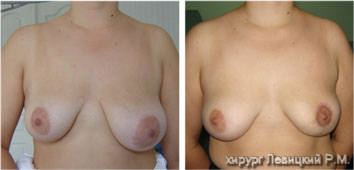
Before and after operation
Breast reduction
is usually done in hospital and most people are admitted for 1-2 days.
At your initial
consultation with your surgeon, he or she will assess your health and
examine your breasts, to determine which type of procedure will give
you the best possible outcome. Be sure to discuss your expectations
with your surgeon.
You will need to
inform your surgeon of any medicines or vitamins that you may be
taking. You may be asked to stop medications such as Aspirin,
anti-inflammatories or Warfarin as they increase the risk of bleeding
at the time of surgery. Smoking increases risks of complications and if
possible, you should stop prior to your surgery.
You should
discuss any other medical conditions that you have as they may
influence the surgery or anaesthesia. You should especially discuss any
previous treatment for breast cancer. Allergies to any medications
should also be reported to your surgeon.
You may
require some screening blood tests or X-rays prior to your surgery.
Your surgeon will discuss this with you. You will need to arrange for
someone to pick you up after your surgery.
If you fall into
an older age bracket, you may be advised to have a pre-operative
mammogram. This is to detect any abnormalities of the breast tissue or
evidence of breast cancer.
Immediately
prior to your surgery, your surgeon will need to measure and mark your
breasts with a marking pen. Photographs may also be taken for your
medical record with your consent.
After surgery,
it is normal to have some dressings over your breasts. It is also
normal to have some discomfort and pain but this is usually well
controlled with analgesic tablets. You will need to return to your
surgeon's rooms for removal of sutures. This is usually around 7-10
days.
You should
not drive yourself home from the hospital. You should avoid Aspirin for
2 weeks after your surgery.
Some minor
ooze from the surgical wounds is normal for a few days after the
surgery. You will need to keep dressings in place until instructed by
your surgeon. The wounds should have healed by about 10-14 days after
surgery. You may also need a supportive bra for the first couple of
weeks after the surgery.
It may be
weeks to months before your breasts settle into their new size and
shape and begin to really feel normal again. When can I return to
Normal Activities?
You will be
up and about within one day of your surgery but you will need plenty of
rest initially. You can eat and drink, as you feel ready to do so.
Your
surgeon will instruct you as to when you can shower and start returning
to normal activity. Most people take 2-4 weeks off work.
You should
avoid strenuous activity especially heavy lifting for at least 2-3
weeks after the surgery. You will find it uncomfortable to sleep on
your front initially therefore you should sleep on your back or side in
the first few weeks. Sexual activity may cause the breasts to swell
with arousal and should be avoided for at least one week after surgery.
When you do start returning to usual activity, start gradually.
Driving a
car should be avoided for about 3 weeks after the surgery as it can
cause strain on your incisions. Also the pressure of a seatbelt may
exacerbate this.
It is not
uncommon to experience some emotional instability after surgery but
this should pass within a short time. Your initial swelling will have
gone down sufficiently by about 2-4 weeks so you can purchase a new bra
to wear.
As with any
surgery, it is possible for complications to arise. In the hands of an
experienced plastic surgeon, these risks are minimised.
If
complications arise that require further treatment or surgery, a
Medicare and/or private health insurance rebate may apply.
Complications
may be related to the surgery or the anaesthetic. These include:
Wound
Infection - usually can be treated with antibiotic tablets. It is more
common in smokers and people with diabetes. Occasionally it is severe
and intravenous antibiotics may be required.
Wound breakdown
- may require regular dressings to aid healing
Bruising and Swelling - is to be expected in
the early stages after surgery and usually subsides in 1-2 weeks.
Bleeding - occasionally a collection of
blood called a haematoma may occur. This may settle by itself or
require a small drainage procedure by your surgeon.
Chest infection - may develop after a
general anaesthetic.
Keloid Scarring - lumpy, pink scars may
occur but is more likely in people who are already known to have this
tendency.
Other - sore throat, blood clots, heart and
circulation problems.
Specific Complications related to Breast
lift or reduction surgery:
Asymmetry - complete symmetry cannot be
guaranteed, especially if there is a degree of asymmetry
pre-operatively.
Altered sensation of nipple/areola - reduced
or heightened sensitivity may be experienced after breast reduction or
breast lift. This is usually temporary but may take several months to
return to normal. In cases where the nipple and areola had to be
replaced as a graft, loss of sensation is usually permanent. In women
having a larger breast reduction, this sensation loss can be permanent.
Loss of nipple
or areola tissue - in some cases, the blood supply to the nipple and
areola may be insufficient after the surgery and this tissue will die.
Reconstruction may be needed. This complication occurs infrequently.
Breast-Feeding
Breast lift
surgery does not usually interfere with a woman's ability to
breast-feed. Breast reduction however, is more extensive surgery and
may interfere with milk production and the ducts that emerge at the
nipple. It is not recommended for women who may wish to
breast-feed in the future. If the nipples require grafting as part of
the surgery, breast-feeding will not be possible.
You should be in the best possible health
prior to your surgery. If you are a smoker, it is advisable to stop at
least 1-2 weeks before your surgery.
Discuss your medications, allergies and
medical problems with your surgeon prior to your operation.
Plan for adequate time off work and
other activities to recover as best as possible.
Breast size and shape will continue to
change with pregnancy, age, weight loss or gain and other factors.
Revisional surgery may be required at some time in the future for any
of these reasons.
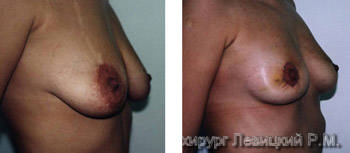
Mammary surgery - before and after operation
A consultation with your surgeon is the
first step. If you have a medical reason for having breast reduction or
breast lift, it is advisable to obtain a referral from your general
practitioner. If it is for cosmetic reasons only you generally won't
need a referral.

 Mammary surgery
Mammary surgery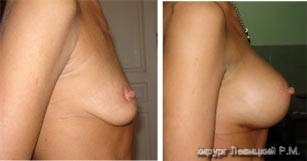
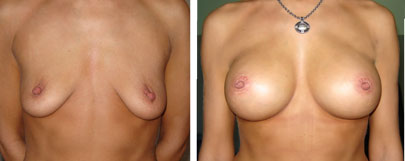
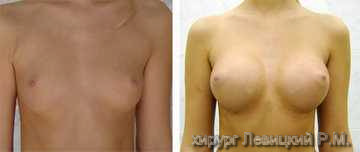
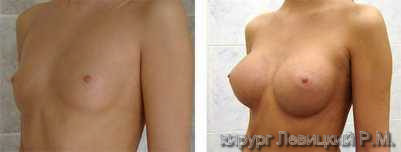
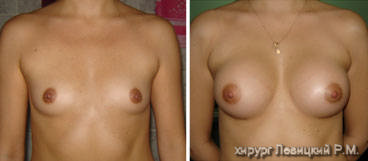
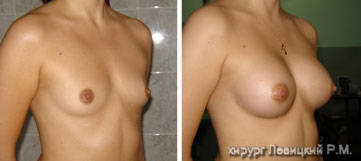





 DE
DE
 RUS
RUS
 ENG
ENG